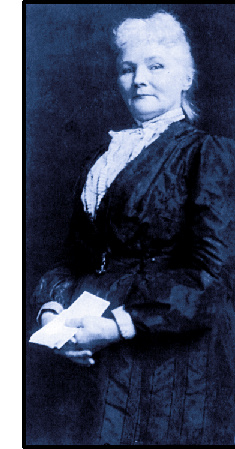

|

|

|

|
|
|
| |
|
|
|
Mother Jones: The Most Dangerous
In 1903, Mary Harris "Mother" Jones, then 66 years old, led a march of 100 boys and girls from Philadelphia to New York to protest child labor. Once in New York, Mother Jones accepted an invitation from an animal show owner on Coney Island to come visit, where she used his stage to give an address. Jones spoke in front of a huge portrait of Roman emperors (with their thumbs pointed down), while chained lions punctuated her speech with roars. She theatrically indicted capitalism and compared it to the brutality of Roman gladiator shows. On the stage stood several animal cages, with children from the mills of Philadelphia locked inside them. They symbolized, Mother Jones declared, the attitudes of American employers toward the children who worked for them. She then declared that she and the marchers would visit President Theodore Roosevelt
Elliott Gorn's new biography, Mother Jones: The Most Dangerous Woman in America, restores some of her complexity, and this is the great achievement of his fascinating book. "Perhaps it is best to think of Mother Jones as a character performed by Mary Jones," he notes insightfully. "She exaggerated her age, wore old-fashioned black dresses, and alluded often to her impending demise." As Gorn takes us through her long history, he explores some of the most dramatic moments in American labor history, from the anthracite strikes of the 1890s, to child-labor campaigns in the early 20th century, to the violent mining wars in West Virginia and Colorado during the 1910s. Born in Ireland, Mary Harris lived through the terrors of the potato famine, fled to Canada and then the United States, worked as a teacher and as a dressmaker, moved to Memphis and married George Jones, an iron molder and union man. Soon after that, in 1867, she watched powerlessly as her entire family (four children and her husband) fell victim to yellow fever and died. Between this tragedy and her emergence in the 1890s as "Mother Jones" we know even less about her. She moved to Chicago and returned to her trade as a dressmaker. She seems to have grown active in the labor movement during the 1880s, joining the Knights of Labor; yet we have no clear understanding of how or why she became radicalized. With so little evidence to go on, Gorn nimbly analyzes the larger contexts of Irish and American history to shed light on his subject. In one of the most interesting--and probably controversial--sections of the book, he explores rumors that Jones spent some of her time during these decades working as a prostitute or running a brothel. Historians routinely have rejected the charges as false, because they came from an anti-labor newspaper. But Gorn, while agreeing such historians are probably right, believes the charges worth investigating anyway. He notes that none of Mother Jones' prominent friends would publically refute the charges when the paper made them in 1904. Furthermore, as Gorn describes it, Jones "once hinted obliquely that there might be something" to the charges when, in a discussion about them with United Mine Workers organizer Duncan MacDonald, she commented, "Don't you think whatever my past might have been that I have more than made up for it?" Macdonald believed this to be a confession. Throughout her life, Jones' enemies repeatedly rehashed these charges to try to undermine her. From today's perspective, however, it is intriguing to think that some of Jones' radicalism may have been fueled by her participation in the world and the problems faced by working prostitutes. But by the early 20th century, Mother Jones' past had become carefully buried. She emerged as a great legend of American labor activism. And although she believed deeply in the socialist cause, Mother Jones was not one for formal political ties; after brief flirtations with both the Socialist Party and the Wobblies, she remained distant from both. Her longest organizational affiliation was with the United Mine Workers, but even there she seemed to develop more enemies than friends among the leadership. The rank-and-file workers mattered to her, not their leaders or institutions. With an energy that seems remarkable for someone her age, she crisscrossed the country. She organized to raise funds for Big Bill Haywood and Charles Moyer when they sat in prison, accused of murder; she worked energetically to support the Mexican revolution; and, of course, she joined the struggles that pushed her to the peak of her fame: the mining battles in West Virginia and Colorado. Here she became known not only for spellbinding speeches, but also for dynamic organizing tactics. She hiked through streams when the mining corporations banned travel through their property; she faced down court injunctions and suffered the indignity of jail, time and again, always knowing that such ruggedness would rally the troops and generate national publicity like nothing else. Through it all, she played up the contradictions of her position and the drama embedded in them. An older woman dressed in respectable clothes, she gave furious speeches, swearing and shouting at the injustices working men and women faced. Emphasizing her identity as the mother of all the workers, with all the loving and nurturing qualities that suggested, she could castigate not only enemies but even her beloved workers, demanding that they live up to their manhood and stop behaving like weaklings. While it is difficult to quantify the impact of an agitator like Mother Jones, Gorn makes it clear that she helped workers win national publicity, inspired rank-and-file workers to greater and more persistent militancy. And, Gorn seems to suggest, she often helped move strikes away from issues of food and wages and toward "much larger issues of freedom, dignity, and the rights of citizens." Yet Mother Jones also possessed important weaknesses. Particularly as she grew older, she sometimes placed too much faith in her ability to convert her enemies. She met with John D. Rockefeller Jr., labor's top villain in the Colorado coal wars (which culminated in the Ludlow Massacre), and then, accepting his claims of non-involvement, publically proclaimed, "I don't hold the boy responsible." Congressional investigation would soon prove just how involved Rockefeller had been. In one of her final battles, in West Virginia during the early 1920s, while in her mid-eighties, Mother Jones grew friendly with the state's governor and faced charges that their close relationship led her to betray the workers' cause when she urged them to end a strike. She never fully recovered from this incident, and her final decade was marked by gradually failing health and efforts to establish her place in history by writing an autobiography. Perhaps her greatest weakness, however, came from the same domestic ideal she exploited so well in creating her motherly persona. Gorn argues effectively that domesticity, the notion of the loving and asexual mother, dominated Mother Jones' image and helped her achieve a moving effect by masking her fiery radicalism. Unfortunately, it also trapped her into supporting conservative notions of a woman's place: "She thundered her message of labor solidarity from a thousand rostrums, then told women that their most important tasks were being good wives and mothers." Similarly, her emphasis on family authority and her devotion to traditional patriarchal structures meant that she remained dependent on powerful men like John Mitchell or Terence Powderly, through whom she exercised much of her power.
|


